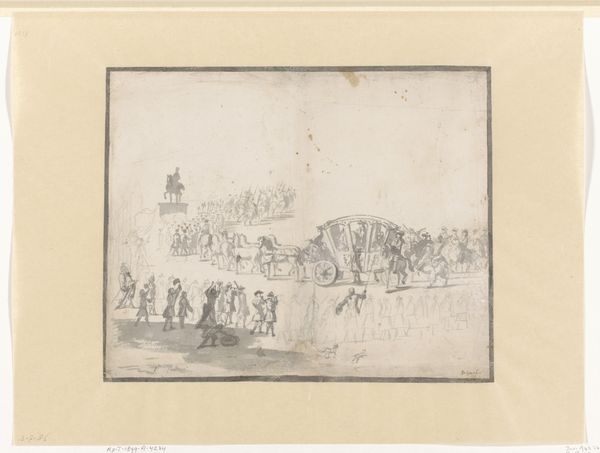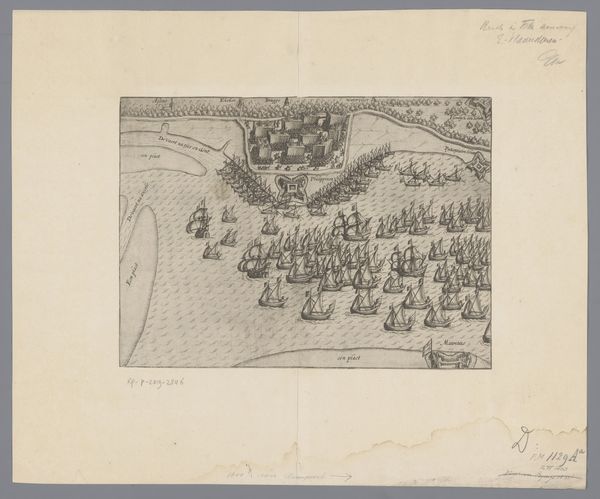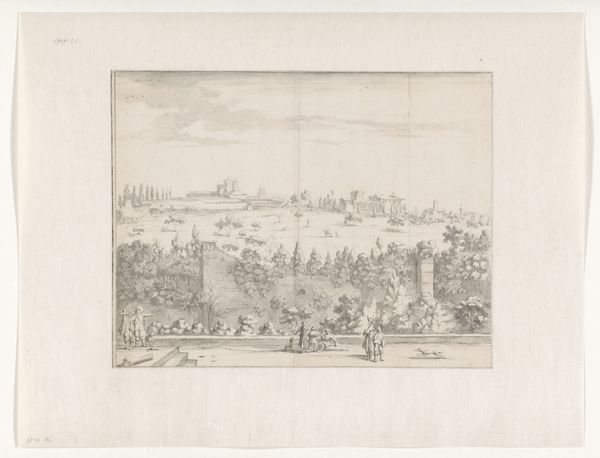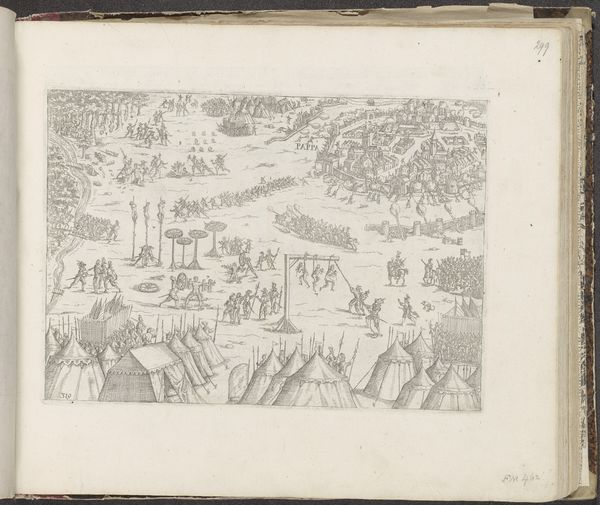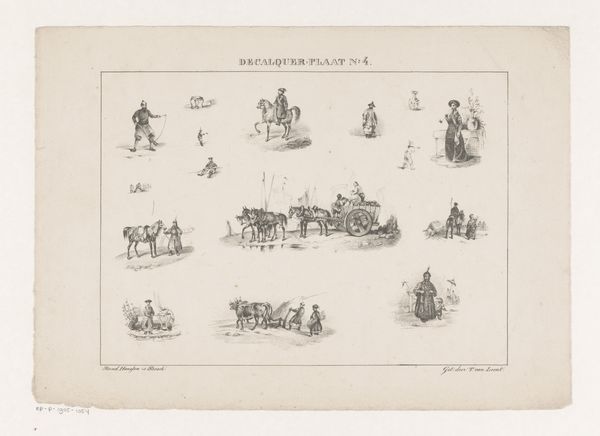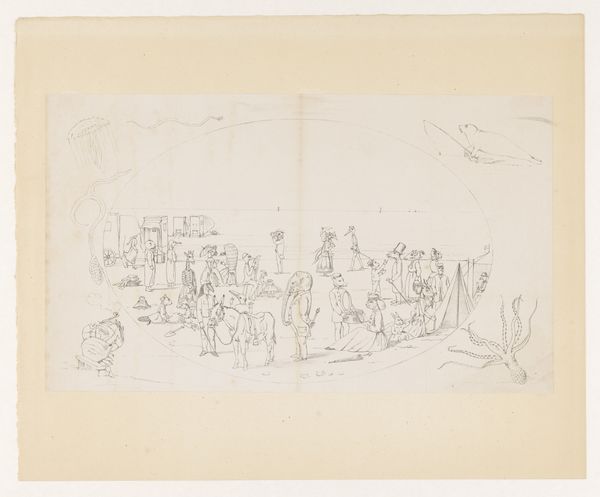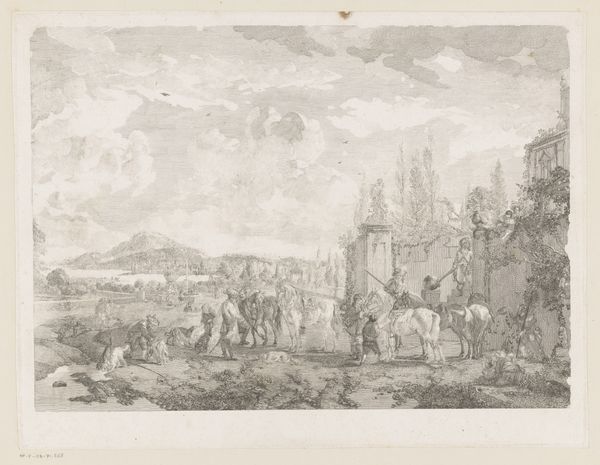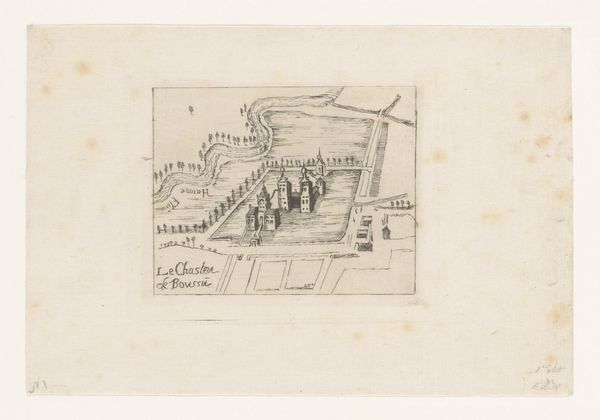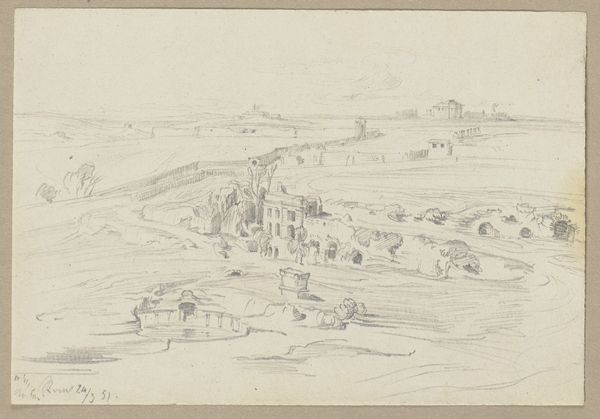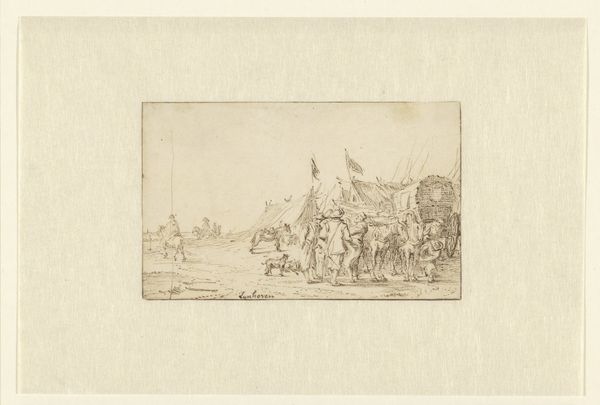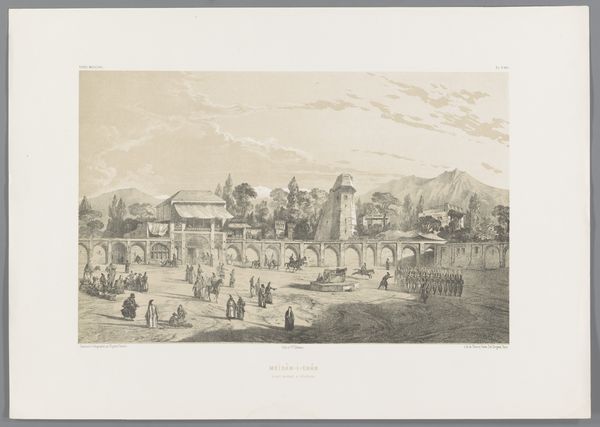
drawing, print, pencil
#
drawing
# print
#
impressionism
#
landscape
#
pencil
#
genre-painting
#
realism
#
sea
Dimensions: 8-3/8 x 13-1/4 in. (21.3 x 33.7 cm)
Copyright: Public Domain
Editor: We're looking at Félicien Rops’ “The Beach at Blankenberghe” from 1863, currently at the Met. It’s a pencil drawing, almost like a quick sketch of a bustling beach scene. It has this slightly unfinished, ephemeral feel, and makes me wonder, what was Rops trying to capture here? What do you see in it? Curator: What strikes me immediately is the depiction of leisure and its inherent connection to material culture. Consider the very act of going to the beach then – it necessitates specific clothing, transportation, and even architectural elements like bathing machines. These objects shaped and regulated the experience itself, right? Editor: That's an interesting perspective. So you’re saying the material context dictated the social activities? Curator: Precisely. Look at how Rops meticulously renders these bathing machines. They’re not merely background elements; they’re essential props in this theatre of leisure. The materiality of leisure—the cloth of the bathing suits, the wood of the changing booths, the paper of the books people are reading, what do those represent within the societal and economic systems? How do these elements, though sketched seemingly spontaneously, speak to broader consumption habits of the emerging middle class? Editor: It almost feels like he’s documenting the apparatus of leisure, rather than just the leisure itself. A commentary on what enables people to experience the seaside. Curator: Indeed! Rops is attentive to the processes and means that define this cultural moment, using drawing, a relatively inexpensive method of art creation, to illustrate more expensive social performances of the bourgeoisie. So, in that light, how might we understand his decision to render this scene not in paint, but pencil, and on paper? Editor: I never considered that it's about the social context created around access, that changes the artwork altogether. Curator: Exactly, it shows how objects are not just things, they're part of bigger conversations.
Comments
No comments
Be the first to comment and join the conversation on the ultimate creative platform.

